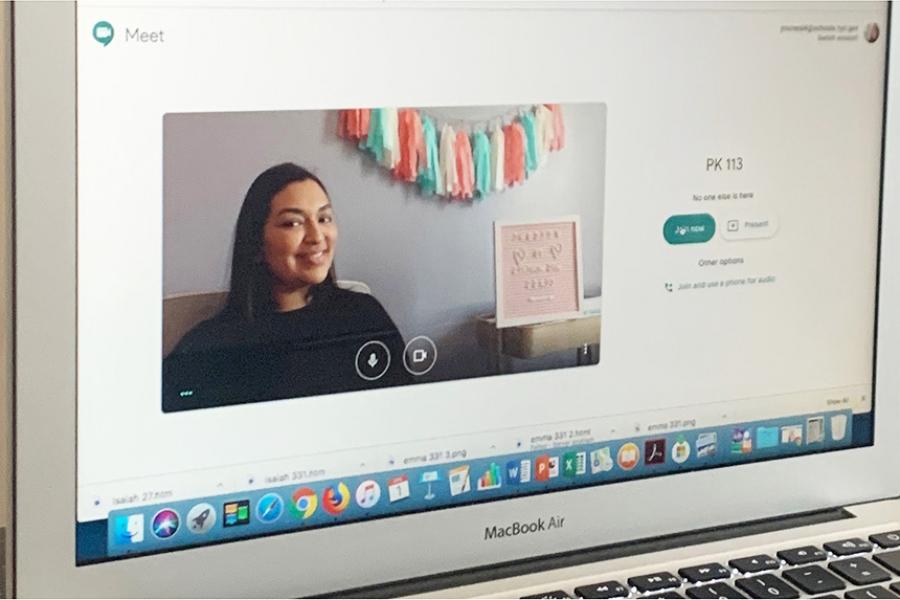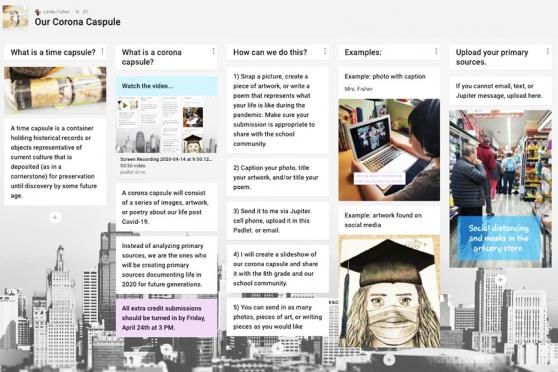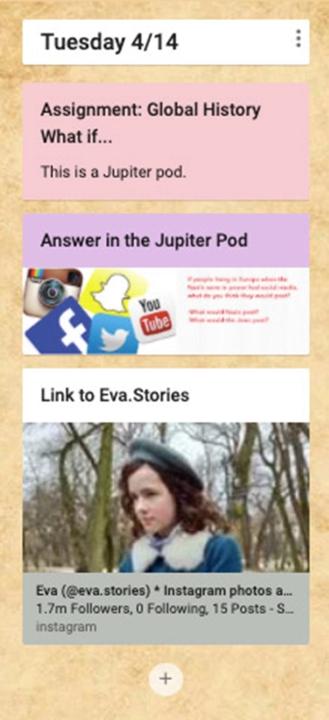Like many New York City public school students, my 7-year-old son cherishes school for more than academic reasons.
“I go to school to hang out with my friends and chat with the teacher,” he confided recently.
So when schools transitioned to remote learning, I was anxious not just about schoolwork but about socialization. How can teachers maintain an engaging, interactive relationship with their students when they can no longer be in the same room?
Educators share the same concerns.
“I’m a classroom teacher because I love teaching and love my kids,” says Linda Fisher, a global history teacher at Isaac Newton MS for Math and Science in East Harlem. “It doesn’t feel right when I’m not seeing them and connecting with them.”
Teachers across the city have harnessed their creativity to meet the challenge.
Johanna McNeal, a prekindergarten teacher at PS 398 in Jackson Heights, Queens, has been nurturing her connection with her students by posting brief videos and pictures of herself participating in familiar activities.
“They always have a way to see me,” she says. “It’s important to give them a sense of security that you’re still there and you’re missing them and you look forward to hearing from them.”
That’s important for older students, too. America Billy, an English teacher at Leon M. Goldstein HS for the Sciences in Manhattan Beach, Brooklyn, has been exchanging YouTube music videos with her 11th- and 12th-grade students as part of a “Music We Love” Google Classroom.
“I have students who may not complete coursework, but they log into that,” she says. “It felt forced and superficial to carry on with lessons without the recognition that something was different. Now is not the time for intense academic rigor, but for human connection and expression.”
At Collaborative Arts MS in Springfield Gardens, Queens, where teachers had been using Google Classroom for five years, 6th-grade teacher and UFT Teacher Center site coordinator Kaitlin Lindh posts a daily icebreaker question that doubles as a check-in for attendance and an opportunity for students to interact with each other as they answer.
The daily post also allows her to connect with students who need more support in this difficult time. “In response to one of my daily questions, a student posted that he was crying, and I alerted our school counselor,” she says. “It’s a mental health check. Kids that didn’t talk that much in class are now the first ones to post. You can feel how much they want to talk to somebody.”
Lindh says she tries to schedule posts and assignments ahead of time, so during the day she can concentrate on providing feedback to students in real time. After posting an assignment to watch a video or read a portion of a book, for instance, teachers at the school enable class comments so students can have a discourse with each other.
Videoconferencing is another way for teachers to engage with their students, but it can be intimidating for new users. If you can, hold sessions with colleagues or even friends or family members so you can get the hang of activating your chosen platform’s various features.
Fisher says that before she started holding regular videoconferences with students using Microsoft Teams, “I did a test group first with a few kids I trusted, and they showed me all the ways kids could interfere.”
She’s also asked her school administrators, counselors and social workers to sit in on class videoconferences to help establish standards.
With younger students, where a videoconference with a whole class might feel chaotic, consider carving out time to meet in smaller groups. At K280 in Windsor Terrace, Brooklyn, prekindergarten teachers are inviting their students to sign up for virtual “choice time” and snack time in groups of five to six.
Teacher Sandra Fajgier emphasizes the importance of setting norms for these meetings just as you would in your classroom. Be clear in your own mind what a particular videoconference is intended to accomplish and communicate that to your students, she advises. “Is this a moment where you want to hear from your students, or are you going to ask them to listen for a bit, as with a read-aloud?”
For some students, a virtual connection with their teachers is cause for joy — my son was so excited to spot his teacher in a video montage sent to us by his school that he leapt off the couch and jumped up and down — but for others, it’s a vital lifeline.
“There’s such a big focus in our day-to-day instruction on mental health and social-emotional learning, it’s important not to pull the rug out from kids in a big crisis,” says Lindh. “They really appreciate that it’s not just a computer teaching them, that someone is still here for them.”


